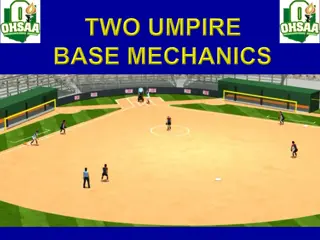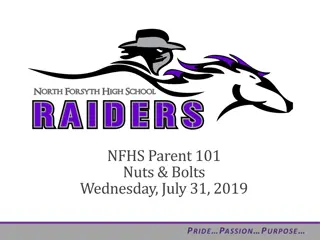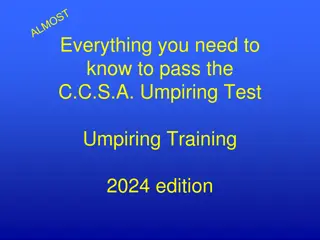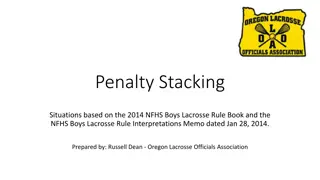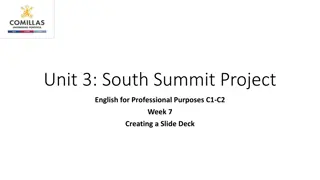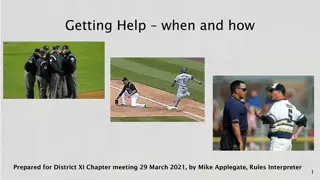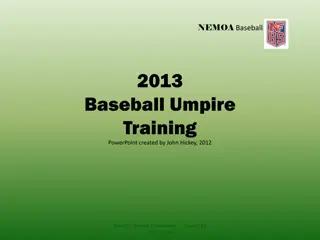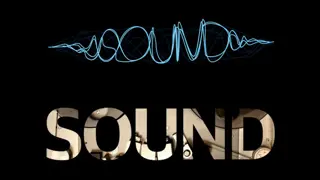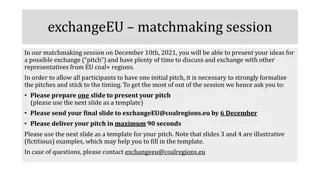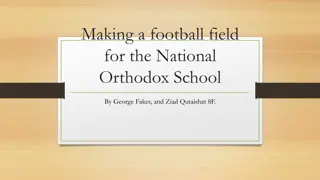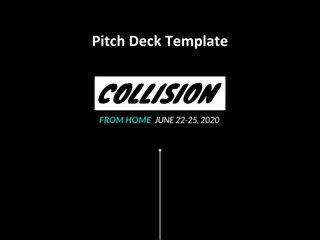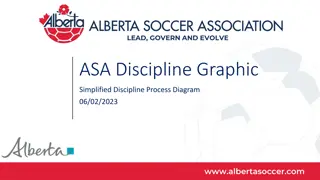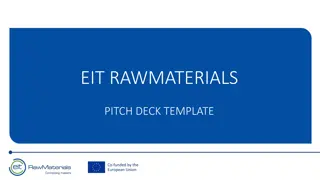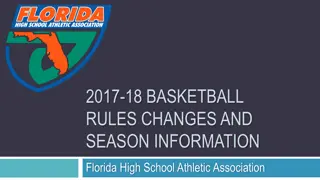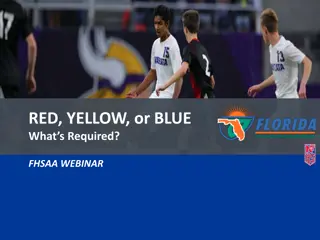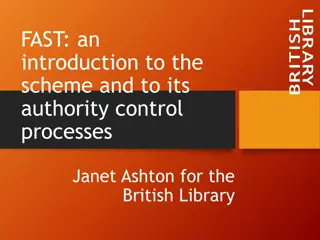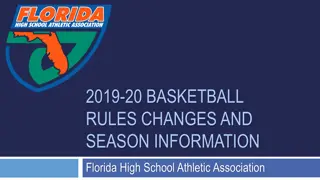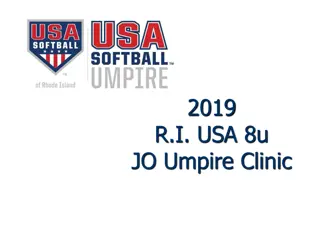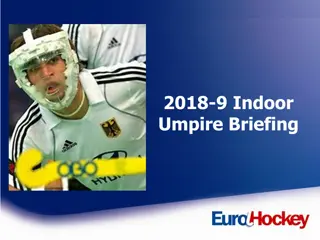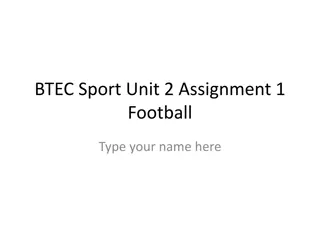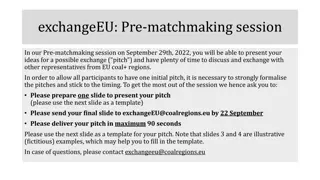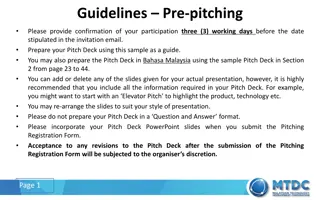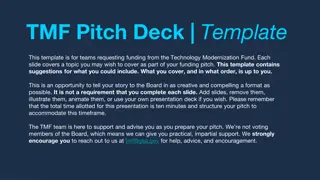Understanding ASA and NFHS Fast Pitch Umpiring Rules
Explore key scenarios in ASA and NFHS fast pitch umpiring rules, including situations involving fair/foul balls, obstruction calls, base awards, and dead ball appeals. Learn how umpires handle complex plays and make crucial decisions based on the regulations set by the governing bodies.
Download Presentation

Please find below an Image/Link to download the presentation.
The content on the website is provided AS IS for your information and personal use only. It may not be sold, licensed, or shared on other websites without obtaining consent from the author. Download presentation by click this link. If you encounter any issues during the download, it is possible that the publisher has removed the file from their server.
E N D
Presentation Transcript
Number of outs, runners on base not an issue. The batter pops the ball up near home plate. She drops the bat and it rolls off her leg and stops inside fair territory. The ball descends, strikes the bat and rolls between home and 1B toward the dugout and enters through an opening. The offensive team's coach wants a fair ball and a two-base award. The defensive coach wants the batter out for interference.
No interference. Bat hits ballmake the call; ball hits bat nothing. While the batter's action helped direct the bat to its resting spot, the situation noted that the ball hit the bat. None of the elements defining a fair ball, "...while over fair territory touches a person, attached equipment or clothing of a player or umpire...(ASA)" or "...while over fair territory touches the person of any umpire or player or their clothing equipment...(NFHS)" is met here. The bat is exempted from detached equipment. Fair/Foul determined only after it is touched/rests, in this case happens in foul territory when the ball goes into the dugout. Foul Ball. Foul Ball.
R1 on 2B, 2 outs. B4 lines a ball to LF. R1 rounds 3B and is obstructed by the F5. F7 throws the ball to F6 who looks at the lead runner but sees that she has an easier play on B4 who is attempting to reach 2B. B4 is tagged out for the third out before R1can reach the plate. Offensive coach demands that the run counts because obstruction is an award of a base.
ASA and NFHS rules place the base award for an obstructed runner at the umpire's judgment. If the umpire judged that R1 would have reached the plate before the B4 was put out had there been no obstruction, the run would score. If the umpire judged that regardless of the obstruction, the runner would not have scored prior to the batter-runner being tagged for the third out, there is no run.
R1 on 3B, R2 on 1B, 1 B4 triples to RF. R2 misses 2B and B4 misses 1B. When play stops and the ball is in the pitcher's possession in the circle, the defensive coach instructs the pitcher to appeal make appeals on the batter-runner and the runner who missed 2B. The pitcher tells the umpire that B4 missed1B and that R2 missed 2B. The umpire calls outs on both appeals but rules that R1scored.
Dead ball appeals are subject to the timing plays/force out rules. In appealing B4 at 1B, the defense removed the force on R1 at 2B. R2 out on appeal is a timing play and occurred after R1 scored. Had the defensive appealed R1 s miss and then B4 in that order, no run would have scored. Umpires must consider only one appeal at a time and instruct the defensive team of such.
R1on 1B, 1 out. B3 hits a sinking line drive to F4 who gloves the ball at her feet. Plate umpire rules catch and out. Ball comes loose from F4 s glove. Base umpire signals safe/no catch. Reacting to the safe call, R1 takes off from 1B but is tagged out before reaching 2B. Plate umpire reaffirms that there was a catch, that the ball came loose on the transfer, ruling B3 out. Umpires rule that three outs have occurred and the half inning over.
Base umpire should not have made any call on F4 catch/no catch. Infield fly balls/liners are plate umpire s call. Plate umpire should have indicated that the ball came loose on transition during the play to avoid confusion. Base umpire could confer with plate umpire after the play and plate umpire could change call. Since base umpire s action put R1 in jeopardy, umpire crew should have returned R1 to 1B and allowed inning to continue (ASA 10-3-c/NFHS 10-2- 3-g). We should not have had two putouts on this play and never an out in which we have put the runner in jeopardy by out actions.
R1 at 2B, 0 outs. B2 hits a ground ball just to the 3B side of the pitching circle. Pitcher makes an attempt to field the ball but did not touch it and in bounded on, striking R1 in her advancement to 3B. No call is made by the umpires. R1 stops at 3B and B2 reaches 1B, no play attempted on either. Defensive coach stalks umpires seeking an interference call. Offensive coach reminds umpires that the ball passed the pitcher.
Both NFHS and ASA specifically exempt the pitcher as a fielder when applying the rule of a batter struck by a fair hit ball that was untouched by a fielder. Immediate dead ball should have been called and R1 declared out, B2 awarded 1B. In the interest of getting the call right, the umpires could have discussed the rule, even consulted the rule book, and corrected the call. Remember, we are only putting all runners back on the base occupied at the start of the play, unless forced to advance due to the placement of the batter, who is awarded 1B, and the runner who made contact with the ball is retired.
R1 at 1B, 0 outs. B2 lines a hit into left field. R1 tries for 3B. F6 receives the throw from the outfield and dives to tag R1. F6 then hits the ground at which time the ball falls out of her glove. B2 reaches 2B on the play. Offensive coach claims that since F6 didn t voluntarily release the ball, the tag was invalid and R1 is not out.
R1 is declared out on F6s tag, if the umpire rules that the ball was secure at the time the tag was made. In tag plays, we are interested in whether the ball was securely held at the time of the tag; the provisions of a catch (voluntary release) do not apply. Conversely, on tag plays, if the ball is juggled, however momentarily, while the tag is being made but secured quickly by the fielder, we do not have a valid tag.
R1 on 2B, 2 outs. B4 doubles to left center. R1 comes home on the play but missed home plate. She then enters the dugout area. Her coach yells at her to go back and touch the plate, which she does and F1, who had the ball in the circle, throws to F2 in an attempt to tag R1 out on the play. B4 seizes the opportunity to run to 3B. The defensive coach starts claiming that R1 is out even before the umpires sort out this play.
Once R1 entered the dugout, she was no longer permitted to return to touch the plate. R1 s return to play and subsequently drawing a throw constitutes interference (NFHS 8-6-16-c, ASA 8-7-P) for a runner drawing a play after being put out or scoring. The umpires would be correct to declare dead ball and call out B4, the runner closest to home, on the interference. However, the defense can also get this run off the board by properly appealing R1's miss of home. This is a "fourth out" appeal and is granted in this situation.
R1 on 3B, R2 on 2B, 1 out. B4 hits a ground ball to F6 who overthrows 1B. First base coach leaves coaching box to avoid the throw and runs halfway toward home in foul territory, coaching the runners advancing to the plate. F9 retrieves the overthrow in foul territory and throws home to attempt a play on the advancing runners. Her throw hits the first base coach. Umpires allow the play to continue, with both runs scoring and B4 reaching 2B.
The offensive team is guilty of interference. Even though the coach was trying to get out of the way, he ended up interfering with an attempted play. Dead ball should have been declared upon the ball striking the coach. R1, the runner closest to home, should have been declared out. R2 should have been returned to 2B unless she had reached 3B at the time the throw was released, in which case she would have been returned to 3B. B4 should have been awarded 1B.
Substitute S4 serves as a courtesy runner for the catcher in the first and third innings. In the fourth inning, S4 replaces F8 in center field. In the fifth inning, the catcher reaches base and the coach summons S4 to courtesy run--"the same runner we've been using all day." S4 takes the base, and the umpire informs the teams of the change, at which time the defensive coach appeals to the umpire that an illegal substitution has occurred and that S4 should be declared out and ejected, along with the coach.
S4 was no longer eligible to serve as a courtesy runner but he picked the wrong time to make his appeal. The offense is guilty of an illegal substitute. NFHS: Once S4 took her base and appealed, S4 is declared out and disqualified (restricted to the bench). There is no penalty to the coach. ASA: Once S4 took her base, she becomes an illegal substitute and is disqualified. She is not called out unless she is out on a play in which she is involved. There is no penalty to the coach.
R1 at 2B, R2 at 1B, 1 out. B4, with 2 strikes, swings at an outside pitch, misses it but F2 does not field cleanly, blocking the ball in front of her. B4 takes off for 1B and both runners run to their next bases. Despite umpire calling "batter out", B4 continues toward 1B running well into fair territory. As F3 sets up to receive the throw from F2, the batter moves to put her in the path of the throw. F2 s throw glances off B4 s shoulder, in fair territory, and down right field line. Plate umpire calls dead ball and declares B1 out on interference by the retired B4 for the third out of the inning.
There is no interference, despite the actions of the retired batter (B4), because there was no play to be made at 1B. For interference to be called there must be a defensive play. The incorrect call, which involved the declaration of a dead ball, created additional problems to rectify. Though it is safe to say that neither runner had made the next base by the time interference had been erroneously declared, moving them back to their original bases further penalized the offended offense. Runners should be placed at 3B and 2B.
R1 on 3B and 1B, 0 outs. Pitch bounces in the dirt and ricochets off F2's shin guard toward the 3B dugout. Right handed batter B2 moves away from the plate and toward the 3B dugout to make certain she would not interfere with any play, unaware of F2's chase of the ball. F2 retrieves the ball but her attempted throw to F1 covering the plate hits B4 in the back.
Intent is not necessary for interference to occur on a play, nor does good intent, like that of our batter, absolve her from the rule. Her re-positioning on this play actually put her in harm's way. The correct call is dead ball, interference on the batter declare her out, and return R1 to 3B. Umpires should be wary of mitigating factors such as: (1) was there a legitimate play being made on the runner (was a fielder in place to receive the ball or had the runner already beaten any possible play) and (2) that fielders are not permitted to gain an interference call merely by hitting an offensive player (was she in the way or did they aim at her to get the call).
"We're playing everyone today," the coach tells her 10 players after posting a lineup that lists a DP in the fourth position and a Flex. In the bottom of the second inning, following the ninth batter in the lineup, the Flex takes what she thought was her turn at bat and rewards the coach with a double. The defensive coach appeals. Both coaches and both umpires become embroiled over the penalty, alternately claiming that there was (a) batting out of order, (b) illegal substitution, (c) unreported substitute.
It cannot be (a) batting out of order because the Flex is not in the 9-player offensive lineup. It could be (c) unreported sub only if the DP had been listed in the first position when the lineup was submitted. The infraction in this case is (b) illegal substitute since the Flex is batting for someone other than the original DP. The Flex is declared out and (ASA) disqualified or (NFHS) restricted to the bench; in both cases a sub can be inserted into her spot in the lineup. B1 loses her turn at bat and the next batter is B2. Had the appeal been made after a pitch to the next batter, the Flex would be disqualified/restricted but her play would stand and a legal sub could be placed on 2B.
R1 on 1B, 0 outs. Plate umpire erroneously gives the count of 2 balls, 1 strike when the count is actually 1-1, but no one catches the error. Two balls later B2 is awarded 1B with R1 advancing to 2B. F2 throws the ball over F1 s glove and R1 scampers to 3B. When the ball is returned to the pitcher, the defensive coach tells the plate ump that it was only Ball 3. The umpires confer and the base umpire confirms the count to be 3-1. The offensive coach is quick to remind all that a pitch, actually pitches, had been thrown after the erroneous count was given, thus the count cannot be changed.
If there is evidence that PU's count was incorrect, as there was in this case with BU's confirmation, the count (or number of outs) may be corrected. This is not an appeal situation and the correction can be made regardless of pitches thrown. B2 is returned to batters box with the correct count (3-1). R1 shall remain at 3B. While the erroneously base on balls to B4 advanced R1 towards 2B at the time the errant throw by the catcher occurred, the ball was live and the defense contributed to this advancement. Had there been no errant throw and had R1 advanced to 2B due to the awarded walk, she should have been returned to 1B. Had she been in the act of stealing 2B, she would be allowed to remain on that base had she reached it safely. Everyone involved in the game, not just the PU, is responsible to knowing the situation (count, outs, etc.).
0 runners, 0 outs. No safety base in use. B1 grounds to F6. F3, in preparation for a low throw, is straddling the base trying to block the throw, which bounces to the fence in foul territory. B1 goes around the base, which is blocked by F3, and proceeds to 2B. F2, backing up the play, retrieves the ball and makes a throw to F4 in time to tag out B1. Base umpire calls dead ball, rules obstruction on the play and awards B1 2B. Once the ball is returned to the pitcher in the circle, the defensive coach instructs the pitcher to make a legal appeal of the runner missing 1B, claiming (1) that all awarded bases must be touched, and (2) that the obstruction occurred before B1 reached 1B, hence she is not protected between first and second bases.
Sometimes the text of our rule books can be used against us. We need to understand the intent. Obstruction by F3 occurred. B1 was awarded 2B because the umpires felt she would have made that base had there been no obstruction. While the obstruction did take place, technically, before B1 reached 1B, we can award runners the base to which we believe they would have reached, and in this case it was 2B. With regard to B1 failure to touch 1B, we are not going to give the defense any advantage for illegal actions committed, as happened on this play.


